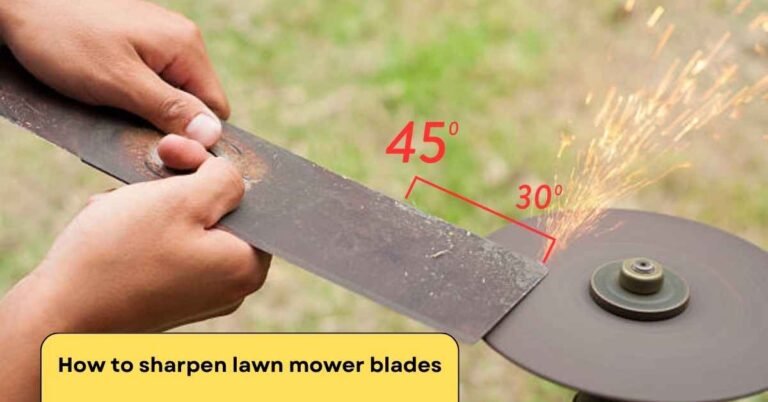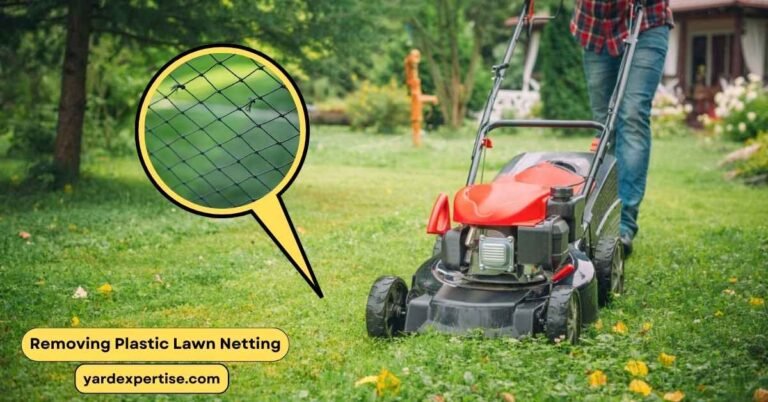Should You Scalp Lawn Before Overseeding?

Scalping the lawn means cutting the grass with a low deck setting of the mower to ensure that the grass is cut significantly lower than usual which exposes the stems of the grass. Scalping your lawn after winter is a good practice that encourages grass growth.
Overseeding means planting grass seeds directly on the lawn without tilling or raking the soil which is done to promote grass growth, increase the grass density, and fill empty patches on the yard.
Scalping before overseeding helps the grass seeds get better access to air and moisture without tilling or raking the soil which improves grass growth by giving them necessary nutrients. Scalping also clears grass clippings or other debris which improves the soil condition drastically.
Why Scalping Lawn Before Overseeding?
There are several benefits of scalping a lawn before overseeding as this process improves the lawn health and prepares it for overseeding. Scalping also ensures that the lawn structure grows uniformly.
Ensures Lawn Health
Scalping is a fantastic method of improving lawn health, especially after winter dormancy which causes the grass to curl up and block the soil’s proper access to sunlight and air. Scalping removes this barrier along with the grass clippings and the debris that blocks the nutrients from reaching the soil.
Scalping removes the grass clippings, debris, and cutting from the soil which ensures that sunlight can reach the soil properly. This changes the soil’s physical, chemical, and biological condition and primes it for new grass.
Prepares the Lawn
Scalping is also a very well-known and tested method of preparing the lawn for overseeding as it creates the perfect opportunity for air, moisture, and sunlight to enter the soil and change the condition to prepare it for new seeds to grow in the springtime.
Uniform Lawn Structure
Scalping also promotes uniform lawn growth as the process ensures that all the grass in the yard is trimmed to the minimum level and the new grass seeds can all grow together on level ground with nutrients spread all around uniformly. A uniform lawn structure enhances the desired aesthetics of your lawn.
How to Prepare Lawn Before Overseeding?
There are a few steps to consider before overseeding your lawn. These steps are discussed below.
Step 1: You should pick the grass seed considering the grass types already existing on your lawn. You might want to change the seed type if the previous grass seeds were not giving good results. Make sure to choose a grass type that suits your climate and soil.
Step 2: Another important step to prepare your lawn for overseeding is testing the soil quality and applying fertilizers accordingly. Test the soil quality to find out if it requires pH level correction or if the soil is missing any key nutrients. Also, check to make sure that the grass seed you will use to overseed the lawn requires any special fertilizer for getting prepared.
Step 3: Mowing the lawn properly is another key step to ensure the desired result from overseeding. Mowing helps to decrease the overall height and density of the grass in the lawn which helps with disbursing the seeds evenly during overseeding. You can also use the mower to scalp the lawn which will help the overseeding process.
Step 4: Watering the lawn is the next step that has to be followed very carefully as overwatering and underwatering can both cause considerable damage to the seed. Water the lawn accordingly to moisten the soil but do not make the soil soaking wet. Wait a day after watering the lawn to start the process of overseeding.
Step 5: Use a core aerator or a manual lawn aerator on the lawn. This will create small holes in the soil which will not only help with the overseeding process but it will also make sure that the soil gets enough air, moisture, and sunlight.
Step 6: The last step of lawn preparation before overseeding is using compost after aeration which will further help with the grass growth. This step is entirely optional as there is already enough fertilizer in the soil to provide all the necessary nutrients for the grass to grow.
How to Scalp Lawn Before Overseeding?
Scalping your lawn can greatly help you prepare it for overseeding as it clears the dirt, dust, debris, and clippings from the yard and makes it easier for the soil to access water, nutrients, and sunlight. The steps of scalping the lawn before overseeding are given below in detail.
Step 1: The first step of scalping your lawn is picking the proper time and climate. Different grass types need to be scalped at different times and you need to find the correct time accordingly. Lawns that are dominated by Zoysia or Bermuda should be scalped in early spring. You can also measure the temperature of the soil to find out if it is ready to be scalped. Warm season grass roots start to grow at 60-65 degrees. The most common time to scalp your lawn is the end of February and early March.
Step 2: The next step is choosing the perfect lawn mower that can help you to properly scalp your lawn. Adjust the height to be lower and lower as you start mowing the lawn. Scalping should be done at an inch or one-and-a-half-inch setting on your mower. Lower the height to the lowest level possible during scalping if it does not support a one-inch setting. There should be a lot of debris and clipping during the procedure of scalping so make sure to adjust the waste bags ready to collect all of them.
Step 3: The third and most important step is running the mower on the lawn and cutting and trimming grass to the lowest possible height. You should gradually lower the height as it will not only make it easier to cut the grass but will also scalp properly. It is common to scalp the soil as well during this process so be careful and mindful. Level the soil properly during this operation to make sure that the soil does not get scalped too much. Make sure to use protective gloves, eye protectors, and a mask during this procedure as it will create a considerable amount of dust, dirt, and clippings to fly out into the air.
Step 4: Use all the grass clippings to make compost which will be useful for the lawn and other gardening endeavors. Do not discard the grass clipping directly on a landfill unless you spread it well.
How Short to Cut Grass Before Overseeding?
You should cut the grass on your lawn to two inches or fewer for overseeding purposes. Set the blade lower at an inch or lower if you wish to scalp the lawn to prepare it for overseeding. Remember to decrease the height slowly and run over the yard multiple times to ensure that the blades run smoothly and no portion of the yard gets unevenly cut.
When Should You Scalp Bermuda Grass?
You should scalp Bermuda Grass during early spring or after all the frosting is gone from the lawn. The recommended period is late February and early March when the soil temperature is around 60-65 degrees Fahrenheit or 15 to 18.3 degrees Celcius.





